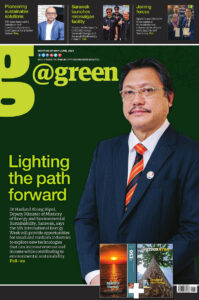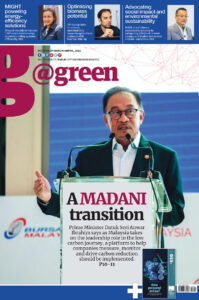Hydropower has enabled Sarawak to offer among the most competitive unsubsidised tariffs in Southeast Asia
With Climate Change being a global concern, Sarawak Energy remains firmly committed to delivering sustainable and clean energy through renewable hydropower and dialling down their emission in line with the Paris Agreement.
“Sustainability is key to maintaining our social license to operate and right to grow,” said James Ung, CEO of SEB Power, the generation arm of Sarawak Energy.

He told @greenXtra that they were focused on achieving balanced energy development to drive sustainable socio-economic transformation. It is a holistic view which balances energy Security, Sustainability and Affordability.
“We have always been focused on delivering a sustainable future for Sarawak by securing and providing renewable energy to accelerate growth. Since our venture into hydropower development, the benefits accrued have been very encouraging,” Ung said.
In line with their Borneo Power Grid ambition, Sarawak Energy currently has a Power Exchange Agreement with West Kalimantan and is pursuing interconnections with the region’s neighbours.
Hydropower, given it offers the lowest Levelised Cost of Energy or LCOE, has also enabled Sarawak to provide among the most competitive unsubsidised tariffs in Southeast Asia, attracting significant investments from power-intensive industries to Sarawak’s shore, benefitting the people and State.
Sarawak Energy remains firmly committed to renewable hydropower development while progressing the United Nations Sustainable Development Goals (UNSDGs) for a sustainable energy future.
Sarawak Energy has been a sustainability partner and platinum member of the International Hydropower Association since 2010 and an early adopter of the association’s Hydropower Sustainability Assessment Protocol (HSAP) guidelines.
The protocol ensures best practices in its hydropower development and operations, including social issues related to project-affected communities.
Ung added they were embedding sustainability practices in their business and operations.
“Sarawak Energy also has an internal Sustainability Division that assesses our hydropower development and operations to improve sustainability strategies and performance.”
As part of the company’s commitment to transparency, Sarawak Energy’s overall corporate sustainability performance is also disclosed via its Annual & Sustainability Report, guided by Global Reporting Initiative (GRI) Standard.
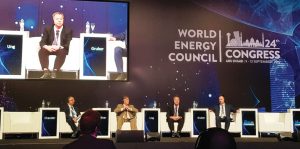
“While hydropower has opened up the rural areas, spurring infrastructure development and economic opportunities, at the same time, the development of hydropower in Sarawak is based on sustainability principles, and a key focus is the effective conservation of the surrounding rainforest and its rejuvenation,” he added.
Sarawak’s first hydropower plant, Batang Ai, facilitated in the establishment of the Batang Ai National Park in 1989. The national park, which is within the HEP’s catchment area, is one of the world’s leading locations for wild Orangutan conservation and research.
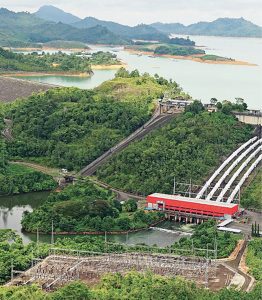
The park and catchment area also protects part of the Lanjak-Entimau Wildlife Sanctuary in Sarawak and the Bentung-Kerihun National Park in Indonesia, a transboundary conservation zone crucial to the future survival of the Bornean orangutan.
These conservation efforts have made Batang Ai a preferred destination for low-impact ecotourism and rainforest research.
Similarly, these initiatives are being pursued for the islands on Bakun lake and the Baleh Hydroelectric Project, which is expected to be completed in 2026.
In 2019, Sarawak Energy signed a Memorandum of Understanding (MoU) with Sarawak’s Forest Department to collaborate on the Baleh Watershed Wildlife Connectivity Project for research and data gathering to conserve and protect the Baleh catchment area and its ecosystem.
This three-year project is part of Sarawak Energy’s integrated catchment management initiative to support biodiversity conservation and build resilient hydropower resources through the protection of catchment areas and water resources.
The Baleh Watershed Connectivity Project is a continuation of the Heart of Borneo (HoB) scientific expedition in 2015, following which 66,721 ha of the surveyed area was officially gazetted as Baleh National Park within the Baleh HEP Catchment Area.
This effort is aligned with the international best practices of the HSAP and the UNSDGs, particularly SDG #15, which entails conserving biodiversity through the prevention of endangered species extinction and SDG #17, which calls for multi-stakeholder partnerships that mobilise shared-knowledge, expertise, technology and financial resources.
The collaboration effort also assisted the development of a long-term monitoring plan for wildlife conservation within the proposed Baleh HEP reservoir as part of the preparation for Wildlife Monitoring and Rescue (WiMOR) of Baleh HEP.
Indeed with the inclusion of large hydropower in the nation’s renewable energy (RE) definition, Sarawak is a primary contributor towards Malaysia’s targets to the Paris Agreement by helping the country meet its Nationally Determined Contributions (NDCs) to reduce carbon emissions.
With this, the Federal government can strengthen Malaysia’s COP21 commitment by revising the national RE capacity mix target from 20% to 31% by 2025.
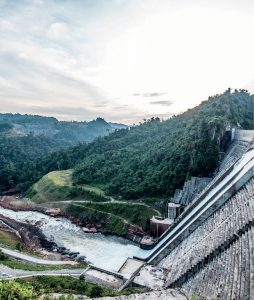
Sarawak contributes 3,452MW of RE from its large hydropower plants of Malaysia’s total large hydro generation capacity of 5,684MW. These are from the Batang Ai HEP (108MW), Bakun HEP (2400MW) and Murum HEP (944MW) all operated by Sarawak Energy.
“The shift to clean and renewable energy is accelerating. It is a global shift that Sarawak Energy supports and is doing its part to contribute.
“Financiers, investors, and businesses are more inclined to forge collaboration with organisations that are socially responsible as this also reflects and affects their reputation,” said Ung.
In June 2020, Sarawak Energy joined 249 companies worldwide to become Malaysia’s first corporation to sign the “Business Ambition for 1.5°Celsius” with the United Nations Global Compact.
It also joined the ‘We Mean Business’ coalition where corporations set a science-based emission reduction target across relevant scopes, in line with the Paris Agreement to pursue efforts to limit the global temperature increase to 1.5°C above pre-industrial levels by 2030.
“We also secured an RM100 million sustainability-linked loan in the form of a revolving credit facility from CIMB Bank.
“It made Sarawak Energy the first East Malaysian company and the first utility company in Malaysia to secure a loan linked to measurable sustainability performance targets.”
This loan is based upon sustainability performance targets (SPTs) to improve the environmental and social performance of Sarawak Energy from 2020 to 2023 financial years.
“And it serves as a reminder for us to keep our grid emission intensity in alignment with the Paris Agreement, and our pledge to ‘Business Ambition for 1.5°Celsius’ mentioned earlier,” Ung explained.
Due to hydropower development, Sarawak has reduced its carbon emission intensity from its power system by 68 per cent from 2011 to 2019.
“As the world progresses towards building a more sustainable energy future, we aim for Sarawak Energy to be a leader in RE at the national and regional levels through our role as a renewable hydropower developer and sustainability champion.”
Being Malaysia’s largest RE contributor and recognised amongst established global hydropower players, Sarawak Energy understands the importance of staying humble and improving how they undertake their projects and manage their power plants responsibly, learning from previous experiences.
“Our journey in pursuing renewable hydropower has been evolutionary, and we have gained so much experience-wise. We look forward to Sarawak Energy’s continued growth for Sarawak and beyond.” — @greenXtra


